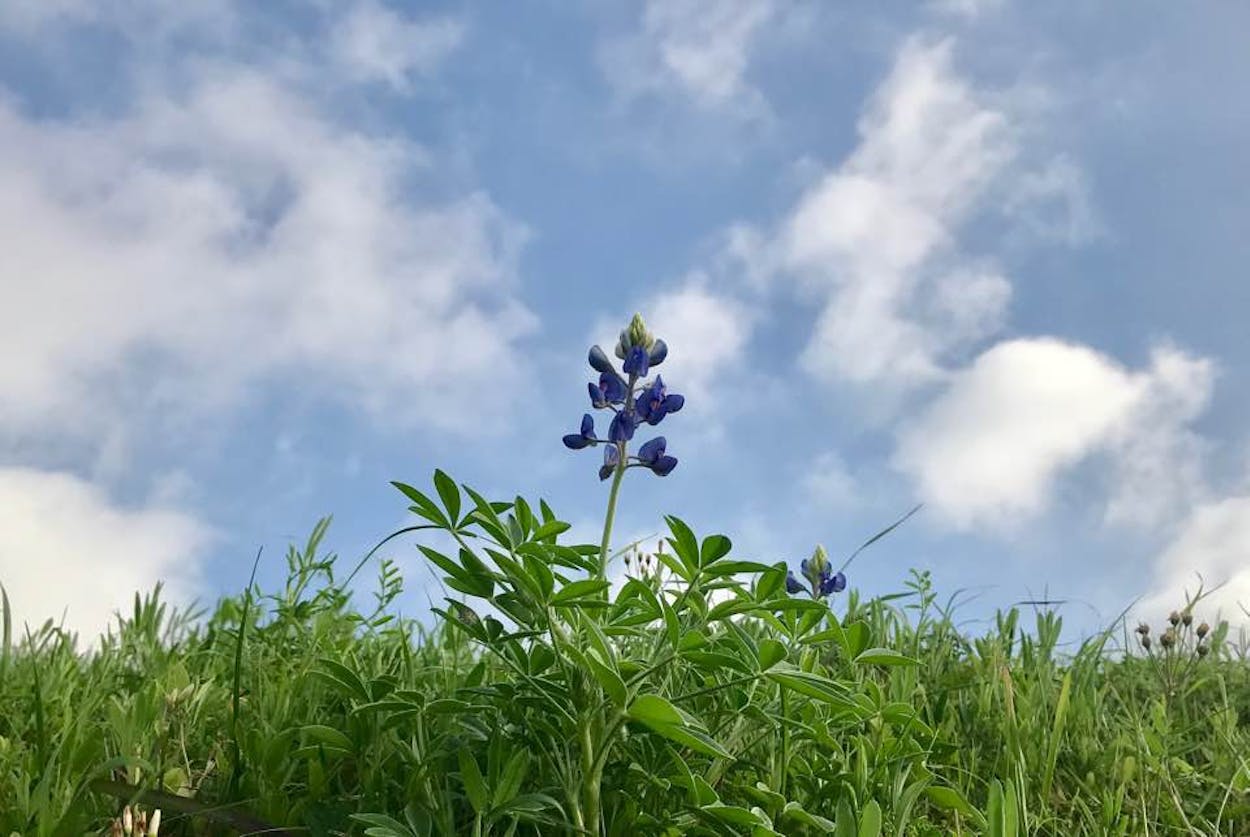I’ve lived a couple of blocks off White Oak Bayou in Houston for about seven years, and I’ve been casually monitoring the first outbreak of bluebonnets through that time. I remember when they came up a day or two before Valentine’s Day, and even that seemed really early to me. But on February 8, a week ahead of all my previous records, I spotted my first bluebonnet of 2017.
I talked to Andrea DeLong-Amaya, director of horticulture at the University of Texas’s Lady Bird Johnson Wildflower Center about what was, to me, a startling development. Though I see the upshot: at least we’re being treated to bluebonnets a little earlier this year.
John Nova Lomax: This beats my previous record bluebonnet by about a week. What are your thoughts on that and when, historically, do bluebonnets start popping up?
Andrea DeLong-Amaya: If you’ve been documenting it, especially for your area, then you’ve probably got a better idea of it. But yeah, I think things are a little early. Because we’ve been seeing unseasonably warm and sunny weather, I’ve been seeing a lot of things come up. Now is the time that a lot of things do come up but it is a little on the early side, especially for bluebonnets. But it’s just been warm, crazy-warm.
JNL: I remember, I think in 2011, that I freaked out because the bluebonnets were up in time for Valentine’s Day. And now we are six days ahead of even that. I’ve heard they’ve been in Big Bend already.
ADA: That’s not as uncommon. Their bluebonnets tend to be earlier than ours. I often think of February as their peak season, because I’ve been to Big Bend in March, and they are kind of wrapping things up, whereas ours [in Austin] are full swing in April. So that doesn’t sound atypical to me.
JNL: I don’t want to freak everybody out but this seems like a clear sign of global warming to me.
ADA: (Laughs) Well, I think it is a clear sign of the unseasonably, record-breaking heat that we’ve had. I know Austin, and I think Houston, has had some record-breaking heat this week. We’ve had three days in the mid- to upper-80s, and all three have broken records. And we didn’t just have that record-breaking heat, but also just warm weather in general. We did have some cold weather in January, but that was long ago enough that any plants that were slowed down at that point are now picking back up because of the warm weather.
JNL: This has kind of been the worst winter in my lifetime because we had just enough cold weather to kill all our tropical plants and then it’s been warm ever since. Our lemons, our oranges, some of our cacti, they all bit the dust in that cold snap.
ADA: Cold enough to kill and warm enough to confuse everything else. (Laughs). January and February are normally the coldest months of the year, and it’s very likely that we are going to have more cold weather this winter. Trying to predict the winter—I am not going to do that—but chances are, we’re going to have another cold snap. And I hope it happens soon, and it will slow things down, because the longer all this tender growth comes up the more susceptible it will be if it does get really cold again, assuming that it will. It happens regularly: just a couple of years ago, we had Texas mountain laurels getting ready to bloom or starting to bloom, and if we get enough of a cold snap, then we might lose all those flowers for that year.
Bluebonnets seem a little more tolerant of that, and I have seen them get nipped by frost, but I think the tops just get nipped a little bit and they just push out of it so quickly that it’s not too big a deal. Normally they are plenty cold-hardy. It’s just that new tender growth that can be more susceptible.
wJNL: Bluebonnets are a harbinger of spring, and it’s arriving so early, and summer is coming right behind that. And do we really welcome summer here in Texas?
ADA: Yeah, it would be great if we had perpetual spring, but we know it’s about to get hot.







